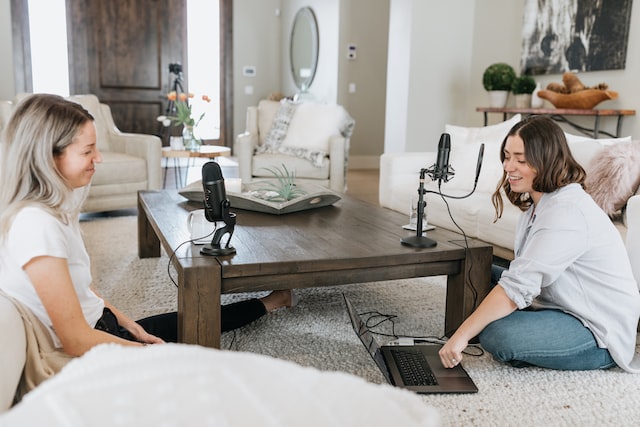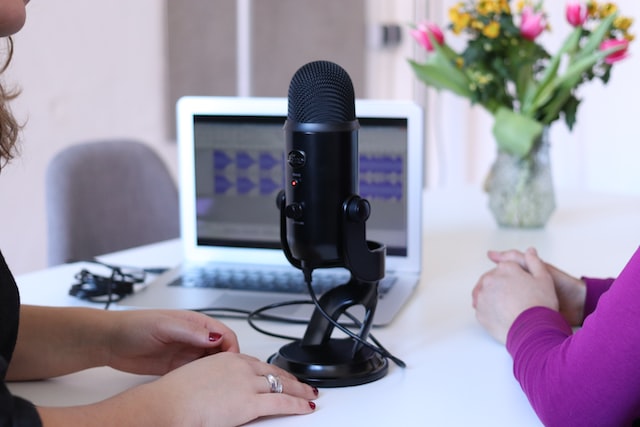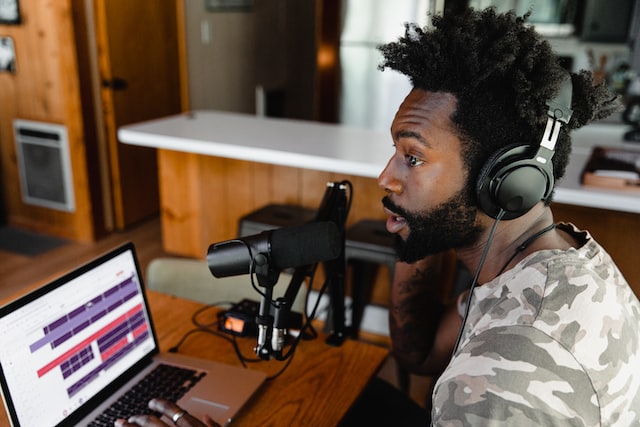
Authentic and alternative assessment
Here, you’ll find definitions and examples of authentic assessment, and resources on how to design one.
Defining authentic assessments
There are many definitions and ideas of what is an authentic assessment. According to Grant Wiggins (1998), an assignment is authentic if it:
- is realistic
- requires judgment and innovation
- asks the student to “do” the subject
- replicates or simulates the contexts in which adults are “tested” in the workplace or in civic or personal life
- assesses the student’s ability to efficiently and effectively use a repertoire of knowledge and skills to negotiate a complex task
- allows appropriate opportunities to rehearse, practise, consult resources, and get feedback on and refine performances and products.(Center for Innovation Teaching and Learning, Authentic Assessment, Indiana University, 2021)
According to A Five Dimensional Framework For Authentic Assessment, authentic assessment requires students to use the same competencies, or combinations of knowledge, skills and attitudes, that they need to apply in the criterion situation in professional life (Gulikers et al., 2004).
Ultimately, it is important to note that authentic assessments should “foster disciplinary behaviours and ways of thinking and problem-solving used by professionals in the field. For example, authentic assessments in engineering would demonstrate students’ increasing ability to think and problem-solve in ways that resembles how experts in the engineering field think and act.”
Teaching and Learning Centre at Queen’s
Authentic assessments are a valuable tool in encouraging academic integrity in a number of ways. First, authentic assessments require students to demonstrate their capacity and competencies. Second, authentic assessments require students to do complex, unique and creative activities which can make the task itself or the performance of the task more meaningful to the learner. These tasks are likely to be rewarding, increasing student engagement, and therefore encourage academic integrity. Thirdly, by design, problems or tasks that are authentic may have many solutions. Students use their theoretical knowledge to construct responses to problems that have a level of complexity and ambiguity not seen in standardized tasks. Finally, authentic assessment speaks to universal design principles, enabling students the opportunity for multiple means of expression.
Examples of the types of assignments that can model authenticity (Lombardi 2008, Assessing Authentically) include:
- problem-based learning
- case studies
- role play
- writing a publication or a letter
- portfolio-based learning
- designing a solution to a real-world problem
- collecting novel data
- analysis of existing data
- staging a performance, conference or exhibition
- constructing a website, tool or service
- forensic problem-solving
Adapted from Authentic Assessments – Encouraging Academic Integrity Through a Preventative Framework (bccampus.ca).

Typical tests vs. authentic tasks
The table below, drawn from Wiggins (1998), illustrates the differences between typical tests and authentic assessments. Reviewing the indicators for authenticity may help faculty design assessments. For example, a traditional test may give students only once chance to demonstrate their learning; however, an authentic assessment requires students to collate information from a variety of sources and allow them to use knowledge or skills in several different ways. Changes to assessments can be made simple, but be impactful, for better student learning.
| Typical tests | Authentic tasks | Indicators of authenticity |
|---|---|---|
| Require correct responses | Require a high-quality product or performance, and a justification of the solutions to problems encountered | Correctness is not the only criterion; students must be able to justify their answers |
| Must be unknown to the student in advance to be valid | Should be known in advance to students as much as possible | The tasks and standards for judgment should be known or predictable |
| Are disconnected from real-world contexts and constraints | Are tied to real-world contexts and constraints; require the student to “do” the subject | The context and constraints of the task are like those encountered by practitioners in the discipline |
| Contain items that isolate particular skills or facts | Are integrated challenges in which a range of skills and knowledge must be used in co-ordination | The task is multifaceted and complex, even if there is a right answer |
| Include easily scored items | Involve complex tasks that for which there may be no right answer, and that may not be easily scored | The validity of the assessment is not sacrificed in favour of reliable scoring |
| Are “one shot”; students get one chance to show their learning | Are iterative; contain recurring tasks | Students may use particular knowledge or skills in several different ways or contexts |
| Provide a score | Provide usable diagnostic information about students’ skills and knowledge | The assessment is designed to improve future performance, and students are important “consumers” of such information |
Adapted from Center for Innovation Teaching and Learning, Authentic Assessment, Indiana University, 2021, Assessment in Remote Environments | eCampusOntario and Wiggins, Grant. (1998). Ensuring authentic performance. Chapter 2 in Educative Assessment: Designing Assessments to Inform and Improve Student Performance. San Francisco: Jossey-Bass, pp. 21 – 42.
Designing authentic assessments
Any assessment in your course is critical and provides students with opportunities to demonstrate their learning and provides them with an idea of their progress, strengths and weaknesses. Assessments ultimately serve as a measure of achieving the learning outcomes. Thinking about designing an authentic assessment can be daunting and questions can arise. Where do I start? How much time will it take? How do I grade it? Is it valid?
In the Authentic Assessment Toolbox, Jon Mueller lays out four key steps in authentic assessment design (Mueller, 2018):

Credit: Durham College Centre for Teaching and Learning
Resources for designing authentic assessment
These resources offer a how-to guide when considering the ins and outs of designing authentic assessments.
| Resource title | Brief description/purpose of resource |
|---|---|
| Building Authentic Assessments (University of Florida) | This website is full of resources to help you create many kinds of authentic assessments. It includes sections for designing collaborative, peer- and self-assessments, strategies for shifting assessments online, promoting academic integrity, and more! |
| Authentic Assessment Toolbox (Merlot.org) | This is a how-to text about creating authentic tasks, rubrics and standards for measuring and improving student learning. |
| Online and Alternative Assessment Ideas (Western University) | This website provides alternative assessment ideas to your face-to-face final exam. When selecting an alternative assessment, consider if it allows students to demonstrate the core learning outcomes of your course. |
| Assessment Strategies Guide (Queen’s University) | This guide is focused on flexible and adaptable options for course assessment, supporting you to make quick but informative decisions on how to assess student performance. |
| Online Strategies for Final Assessment (Lakehead University) | This website offers some practical tips and resources to assist with the development of assessment for online learning. |
Adapted from Assessment in Remote Environments | eCampusOntario
- Gulikers, J. T. M., Bastiaens, T. J., & Kirschner, P. A. (2004). A five-dimensional framework for authentic assessment. In Educational Technology Research and Development (Vol. 52, Issue 3, pp. 67–86). https://doi.org/10.1007/bf02504676
- Lombardi Marilyn M. (2008) “Making the Grade: The Role of Assessment in Authentic Learning”, Educause Learning Initiative
Authentic assessments: Podcasts
Podcasts are part of many people’s daily lives as well as in their studies. Students may encounter podcasts alongside other materials in their reading and listening assignments; teachers may use podcasts as a Universal Design for Learning (UDL) framework to support student learning. Allowing students to create a podcast as a means of demonstrating their knowledge and understanding of a topic is a sound pedagogical practice (Godsey, 2016). Additionally, podcast assignments can help encourage students’ intrinsic motivation when they are able to choose their assessment (O’Bryan & Hegelheimer, 2007), and when they perceive the assignment to be “interesting and challenging [and] the reward is enjoyment of the activity itself” (Ehrman et al., 2003, p. 320).
You might allow students to create their own podcast, perhaps including questions, discussions, presentations or projects. These can then be made available to their classmates. This allows students to take control of an aspect of their education, and therefore encourages engagement in the material. They can question, they can contribute, and they can teach each other. Students tend to increase time and effort put into a class project, such as a podcast, when they anticipate the project being accessed by their peers and external audiences (Chan, Lee, & McLoughlin, 2007; McMinn, 2008).
Podcast as an alternative to traditional exam or essay
Considering authentic assessment principles, having students create a short podcast in place of an essay or traditional exam has proved to be a highly effective means of increasing engagement, deepening critical and analytic skills, and letting students learn via experience how information is transformed into knowledge (Wiggin, 1998). Replacing the traditional essay or exam with podcast creation moves students away from cramming for exams or considering contract cheating to working on a team-based project that draws on skills like critical thinking and verbal dexterity. It can also boost student interest and participation by supporting those students seemingly not good at the academic essay.
A podcast assignment challenges student to bring together other skills like research and analysis with other modes: interviewing, dialogue, balancing conflicting points of view, and extemporaneous analysis, to name a few. Students learn how to construct an argument with regard to logic, tone and audience, and they become more aware of the power of their voices to affect change. Researching, outlining, recording, editing and presenting short podcasts fosters deeper discussion and collaboration and meets students where they already are—deeply immersed in creative technologies.
You can add a component to the assessment whereby other students need to listen and provide guided feedback on the student podcast that helps to create a shared purpose that is difficult to achieve when student write single-authored essays or exams.
Adapted from How to harness podcasting for teaching and scholarship (opinion) (insidehighered.com).
Considerations for podcast assignments
When thinking about whether a podcast assignment is right for your course, consider the following:
- How does this assignment align with your course learning objectives? Assigning a podcast should not be busy work, but rather link to the required learning of the course.
- What tools (e.g. microphone, recording device or editing software) do students need to successfully complete this assignment? How accessible are these tools? Do you know these tools well enough to teach students or help them troubleshoot issues?
- How will you scaffold the knowledge students need to successfully produce their podcast into your course? If students are not familiar with producing a podcast, this could create additional work for students as they learn how to create a podcast. You may need to consider how you can support this learning.
- How publicly will the students’ work be shared? Is the podcast only for your students, or are they expected to share it more broadly?
- Is this a group project? If so, how will you handle group dynamics?
- What discussions around copyright should you consider?
Adapted from Using Podcasts in Your Classroom – Duke Learning Innovation.

Ideas for incorporating a podcast assignment
Some ideas for incorporating student-produced podcasts into your course are listed below:
- Ideally, podcasts should be between 15 to 30 minutes, but as a student assignment, consider episodes of 10 to 15 minutes
- Each podcast should be accompanied by a transcript
- Assign small groups of students (ideally, no more than five per group) to introduce weekly readings
- Assign individuals or groups of students to present on a text or topic not already covered in the course
- Assign a podcast series as the major project of your course
- Offer a podcast episode or podcast series as an alternative to writing response papers or a term paper in your course
References
Chan, A., Lee, M.J.W. (2005). An MP3 a day keeps the worries away: Exploring the use of podcasting to address preconceptions and alleviate pre-class anxiety amongst undergraduate information technology students. In D.H.R. Spennemann, L. Burr (eds.) Good practice in practice: Proceedings of the Student Experience Conference, Wagga Wagga, NSW: Charles Stuart University: 58-70.
Ehrman, M., Leaver, B, & Oxford, R. (2003). A brief overview of individual differences in second language learning. System, 31(3): 313-330.
O’Bryan, A. & Hegelheimer, A. (2007). Integrating CALL into the classroom: The role of podcasting in an ESL listening strategies course. ReCALL, 19(2): 162-180.
McMinn, S. (2008). Podcasting possibilities: Increasing time and motivation in the language learning classroom. European Institute for E-Learning. Learning Forum 2008: 212-215.
Wiggins, Grant. (1998). Ensuring authentic performance. Chapter 2 in Educative Assessment: Designing Assessments to Inform and Improve Student Performance. San Francisco: Jossey-Bass, pp. 21 – 42.
Banner image by Alexis Brown on Unsplash


